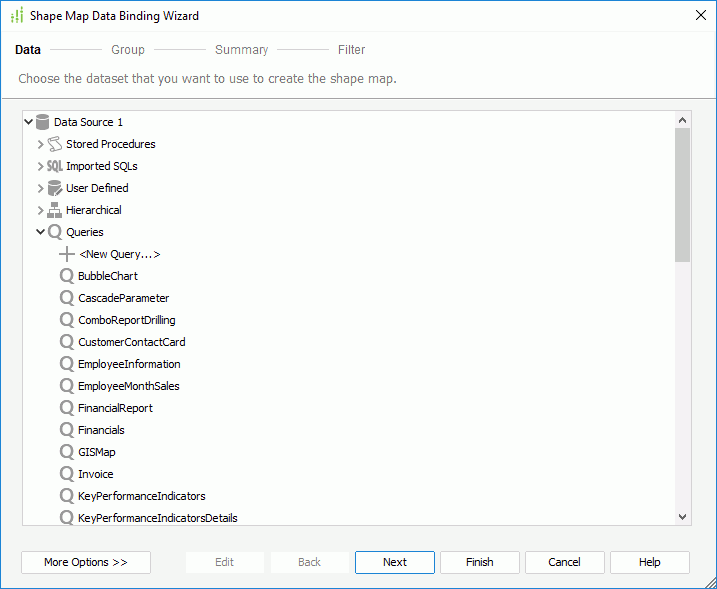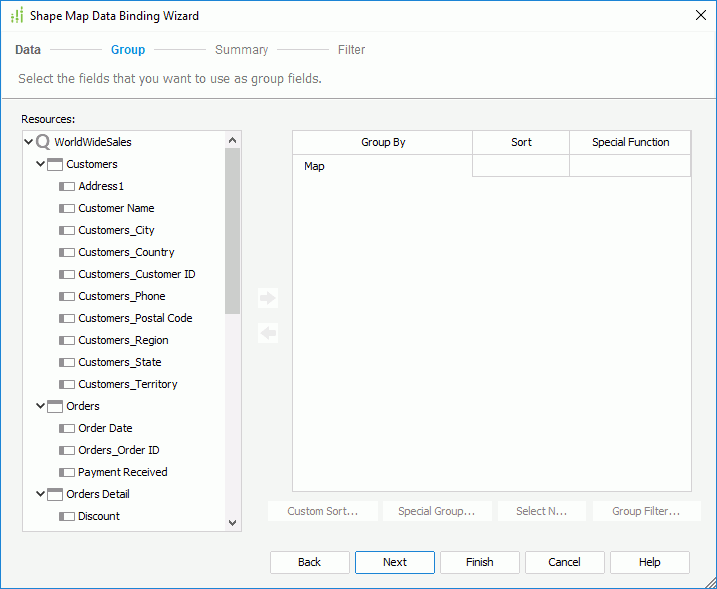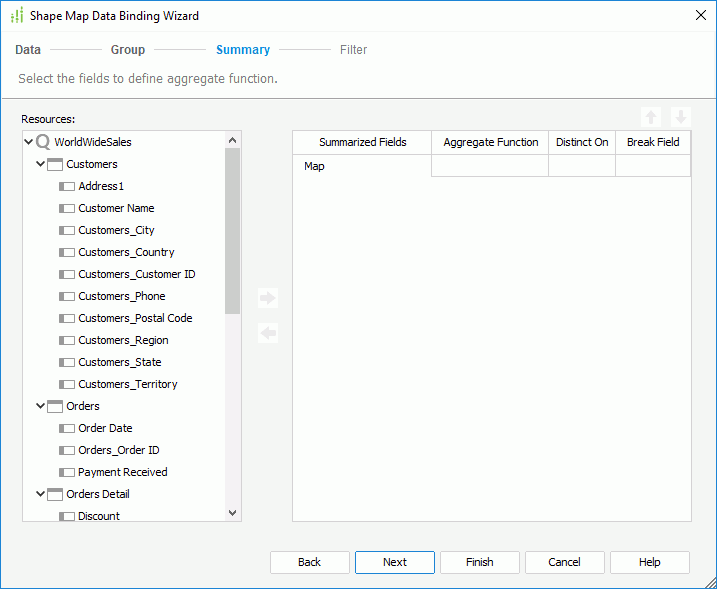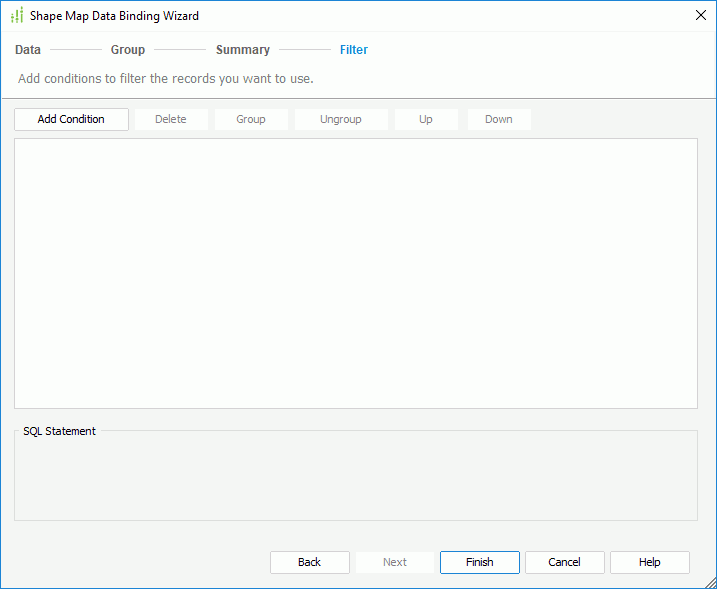Shape Map Data Binding Wizard Dialog
The Shape Map Data Binding Wizard helps you to bind a dataset to a shape map and make values displayed on the shape map areas according to your requirements. It appears when you select Insert > Bind Data in the Shape Map Editor.
The wizard contains the following screens: Data, Group, Summary and Filter.
Back
Goes back to the previous screen.
Next
Goes to the next screen.
Finish
Finishes data binding and closes this wizard.
Cancel
Does not retain changes and closes this wizard.
Help
Displays the help document about this feature.
Data
Specifies the dataset that will be bound with the map.

Resource box
Lists the available data resources in the current catalog. Select one to be bound with the map.
More Options/Less Options
Shows or hides the dataset selection panel to choose a dataset for the map.
- New Dataset
Specifies to create a dataset from the current catalog data resources. When a query is selected, you can select the Edit button to edit the query in the Query Editor. - Existing Dataset
Specifies to use a dataset from the ones existing in the current page report. You can select the Edit button to edit the dataset in the Dataset Editor. - Current Dataset
Specifies to inherit the dataset used by the parent object.
Group
Specifies the field to group the data.

Resources
Lists all the available data resources.

Adds the selected field as the group-by field.

Removes the selected group-by field that is not required.
Group By
Lists the field that is used to group data.
Sort
Specifies how groups will be sorted.
- Ascend
Groups will be sorted in an ascending order (A, B, C). - Descend
Groups will be sorted in a descending order (C, B, A). - No Sort
Groups will be sorted in the original order in database. - Special Group
Opens the User Defined Group dialog to define grouping information. - Custom Sort
Opens the Custom Sort dialog to set how groups will be sorted.
Special Function
If the group-by field is of Numeric/String/Date/Time type, you can select a special function for the field in the Special Function column to further specify to which level the data will be grouped by.
If Customize is selected, the Customized Function dialog will be displayed, in which you can set the function.
Custom Sort
Specifies how to sort the groups. Activated only when you have selected Custom Sort from the Sort column to define the sorting manner of groups for the selected group level.
Special Group
Specifies how to group your information. Activated only when you have selected Special Group from the Sort column to define a special group.
Select N
Opens the Select N dialog to specify the Select N condition.
Group Filter
Opens the Group Filter dialog to specify the group filter condition.
Summary
Specifies the fields on which to create aggregate functions.

Resources
Lists all the available data resources.

Adds the selected field as the summary field.

Removes the selected summary field that is not required.

Moves the specified summary field one step up.

Moves the specified summary field one step down.
Summarized Fields
Lists all the fields that you want to display and to be summarized.
Aggregate Function
Specifies the function to summarize the selected field.
Distinct On
Available and should be set when DistinctSum is selected as the aggregate function. It specifies the fields according to whose unique values to calculate DistinctSum. Select  in the text box to select the required fields in the Select Fields dialog.
in the text box to select the required fields in the Select Fields dialog.
Break Field
Displays a defined field on which the summary will be calculated.
Filter
Specifies to filter the data displayed on the map areas.

The options in the screen are the same as those in the Edit Filter dialog.
 Previous Topic
Previous Topic